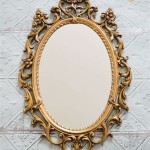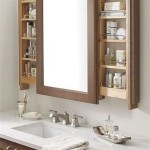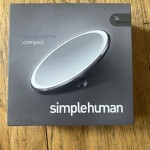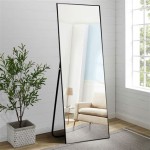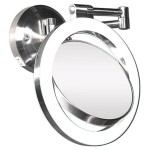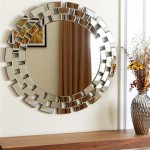Frameless Wall Mirror Mounting Brackets
Frameless mirrors offer a sleek, modern aesthetic, enhancing the perception of space and light in any room. Their minimalist design, however, presents unique mounting challenges. Traditional mirror hanging methods relying on a frame's structure are unsuitable. This is where frameless wall mirror mounting brackets come into play. These specialized brackets provide a secure and discreet method for affixing frameless mirrors to walls, ensuring both stability and a clean, uninterrupted visual appeal.
A variety of frameless mirror mounting brackets exist, each designed with specific functionalities and installation considerations. Understanding these differences is crucial for selecting the appropriate bracket for a given mirror and wall type.
**J-Bar Brackets:** J-bar brackets are a popular choice due to their relatively simple installation and robust support. These brackets feature a "J" shaped channel into which the bottom or sides of the mirror slide. The bracket is then secured to the wall, holding the mirror firmly in place. J-bar brackets are generally suitable for heavier mirrors and offer good lateral stability. However, they may leave a small portion of the bracket visible, depending on the mirror's size and placement.
**Z-Clips:** Z-clips offer a more concealed mounting solution. These clips consist of two interlocking parts: one attaches to the wall, and the other to the back of the mirror. When interlocked, they create a secure grip, effectively hiding the mounting hardware. Z-clips are ideal for thinner, lighter mirrors and offer a truly frameless appearance. However, they may require more precise installation than J-bar brackets.
**Adhesive Pads:** For lighter mirrors, adhesive pads offer a quick and easy, albeit less robust, mounting solution. These pads utilize strong adhesive to bond the mirror directly to the wall. While convenient, this method is not recommended for heavier mirrors or in areas exposed to high humidity or temperature fluctuations, which can weaken the adhesive over time.
**Mirror Mastic:** Mirror mastic is a specialized adhesive specifically formulated for mounting mirrors. This heavy-duty adhesive provides a strong bond and is suitable for larger, heavier mirrors. However, using mirror mastic requires careful application and precise positioning, as the bond is permanent. Removing a mirror installed with mastic can be challenging and may damage the wall.
Beyond bracket type, several other factors influence the selection and installation process. Mirror weight and dimensions are paramount. Heavier mirrors necessitate stronger, more robust brackets, while larger mirrors require more mounting points for adequate support.
Wall material also plays a significant role. Different wall types require different anchoring methods. Drywall, for instance, typically requires wall anchors to provide a secure hold, while concrete or brick walls may require specialized masonry anchors. Always consult the bracket manufacturer's instructions for recommended anchoring methods based on the specific wall material.
Proper installation is crucial for ensuring the mirror's stability and longevity. Before installation, carefully measure and mark the bracket placement on both the wall and the mirror. Ensure the markings are level and accurately reflect the desired mirror position. When drilling into walls, use appropriate safety precautions and wear protective eyewear.
For optimal support, especially with larger or heavier mirrors, use multiple brackets spaced evenly across the mirror's back. This distributes the weight and minimizes stress on any single mounting point. When tightening screws, avoid overtightening, which can crack the mirror or damage the wall. Gentle, firm pressure is sufficient to secure the brackets.
Regular inspection of the mounting hardware is recommended to ensure the mirror remains securely affixed to the wall. Over time, vibrations or environmental factors can loosen screws or weaken adhesive. Addressing any loose hardware promptly can prevent potential accidents and ensure the mirror's long-term stability.
Choosing the appropriate frameless wall mirror mounting brackets and following proper installation procedures are essential for achieving a secure and aesthetically pleasing result. By understanding the various bracket types, considering the mirror and wall characteristics, and adhering to best practices, one can confidently install frameless mirrors, adding a touch of modern elegance to any space.

How To Hang A Frameless Mirror On The Wall With Pictures

How To Install A Mirror Without Frame Merrypad

4 Mirror Wall Hanging Mounting Fixing Kit Frameless Plastic Clips

4 Mirror Wall Hanging Mounting Fixing Kit Frameless Plastic Clips

4pcs Chrome Mirror Wall Hanging Fixing Kit Frameless Clips Mounting Hanger Clamp Com

How To Hang A Frameless Mirror On The Wall With Pictures

4 Mirror Wall Hanging Mounting Fixing Kit Frameless Plastic Clips

How To Install A Mirror Without Frame Merrypad

Fhc Mc655 Spring Loaded Mirror Clips Nickel Plated With S Frameless Hardware Company

4pcs Mirror Wall Hanging Frameless Clips Glass Bracket Mounting Lazada Ph

